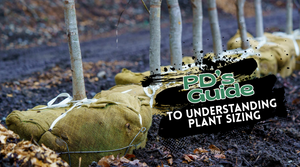Lowbush Blueberry
Lowbush Blueberry (Vaccinium angustifolium)
Lowbush Blueberry (Vaccinium angustifolium), also known as Wild Blueberry, is a native, cold-hardy groundcover shrub prized for its sweet, antioxidant-rich berries and brilliant fall foliage. Thriving in poor, acidic soils and harsh climates, this tough yet beautiful plant offers ecological value, erosion control, and ornamental charm in naturalized and edible landscapes.
Distinctive Features
This low-growing deciduous shrub reaches just 6 to 24 inches tall, spreading by rhizomes to form dense colonies over time. In spring, delicate bell-shaped white to pink flowers bloom, followed by small, intensely flavored blue fruits in mid to late summer. The fine-textured green foliage turns fiery shades of red, orange, and burgundy in fall, creating a stunning seasonal groundcover display.
Growing Conditions
- Sun Exposure: Full sun to partial shade
- Soil Type: Sandy, rocky, or well-drained acidic soils
- Soil pH: Strongly acidic (4.2 to 5.2 preferred)
- Water Needs: Low to moderate; drought-tolerant once established
- USDA Hardiness Zones: 2 to 6
Ideal Uses
- Focal point groundcover in native and edible gardens
- Erosion control on slopes, banks, and sandy sites
- Underplanting in open woodland or pine settings
- Low-maintenance border or mass planting
- Pollinator and wildlife-friendly plantings
Low Maintenance Care
- Prune by mowing or shearing every 2 to 3 years to rejuvenate growth
- Apply acidic mulch such as pine needles or bark to maintain soil conditions
- Water during prolonged drought, especially in sandy soils
- Fertilize sparingly with low-nitrogen, acid-forming products if needed
- Allow space to spread and remove weeds during establishment
Why Choose Lowbush Blueberry
- Produces flavorful wild blueberries ideal for fresh eating and baking
- Brilliant fall color adds ornamental value to naturalistic settings
- Native species that supports pollinators and wildlife
- Thrives in poor, acidic soils with minimal care
- A beautiful, edible focal point for groundcover and restoration projects
Lowbush Blueberry offers unmatched hardiness, ecological benefit, and visual appeal�making it a rewarding focal point for gardeners looking to blend native beauty with edible productivity in challenging landscapes.

OUR SIZING
Not sure what 2 inch B&B or 30 Gallon Clump really means? This guide breaks down all our plant size terms so you know exactly what to expect, whether you're ordering online or picking up at our nursery. From caliper measurements to container volumes, we've decoded our system to help you shop with confidence.

Plant Detectives Shipping Guide
Nationwide plant shipping made easy. Learn how we ship trees, shrubs, annuals and perennials. No order too big or too small. Fast, careful, and contractor-friendly.
